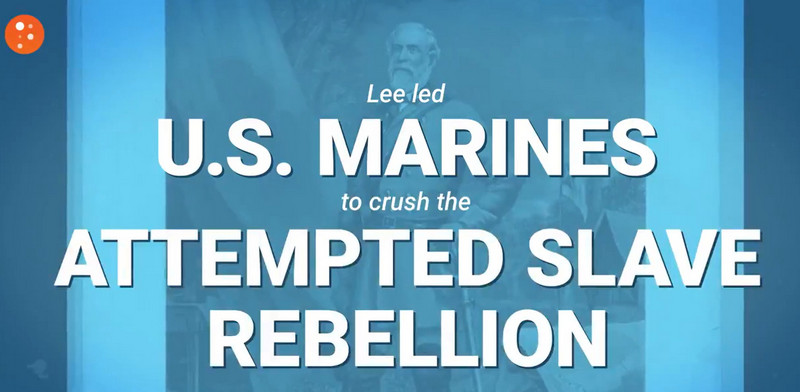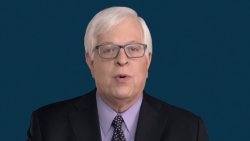After news broke this morning that a statue of Confederate General Robert E. Lee was removed from the U.S. Capitol, right-wing propaganda producer PragerU pushed out a two-minute video defending statues honoring Lee.
The video comes across like a parody of Prager U material, devoting its first half to the historical pedigree of Lee and his wife and to Lee’s crushing of abolitionist John Brown’s effort to provoke an uprising among people held as slaves.
The video notes that Lee believed slavery was “a greater evil to the white than to the black race” because “blacks are immeasurably better off here than in Africa.”
It mentions that Lee’s former home is now the site of Arlington National Cemetery, without noting that after the war Lee and his family fought to regain possession of the estate from the U.S. government and end burials on the property.
Here’s a transcript:
Who was Robert E. Lee?
Statues of great historical figures like Robert E. Lee are being torn down across America. Here are some facts about Lee that remind us why his statue should remain.
Robert E. Lee was connected to George Washington through his father, “Light Horse Harry” Lee—Washington’s Cavalry Commander—and his wife—Martha Washington’s great-granddaughter.
Lee’s Home at Arlington House was just ten miles from Washington’s Mount Vernon. Today, it is the site of Arlington National Cemetery.
After 30 years of military service, Lee led U.S. Marines to crush the attempted slave rebellion by radical abolitionist John Brown in October 1859. Twenty-one co-conspirators had seized a federal armory and all of them were killed or captured, including John Brown, who was tried and hanged for treason.
Lee deemed slavery “a moral and political evil and any country” but considered it “a greater evil to the white man than to the black race” since “blacks are immeasurably better off here than in Africa.”
Opposing secession, Lee foresaw “no greater calamity for the country than a dissolution of the union.” But when Virginia seceded in a close vote, Lee resigned his commission. Despite offers to command Union forces, Lee opted to organize the defense of his native state.
After four years as Confederate commander, Lee became an “icon of reconciliation” upon his surrender.
As president of Virginia’s Washington College, he favored education for freed slaves but opposed their right to vote.
Lee died from a stroke in 1870 and is buried beneath Lee Chapel in what’s now Washington and Lee University. His legendary warhorse, Traveler, rests in a plot nearby.
PragerU promotes its right-wing version of American ideals and history through the use of videos, one of which was apparently the source of right-wing activist Candace Owens’ false claim that the Republican Party’s racist and historically well-documented “Southern strategy” was a “myth” that “never happened.”
The Lee statue was removed from the Capitol on the request of the Virginia government. Each state gets to place two statues in the Capitol; the Virginia legislature had established a commission earlier this year which recommended that Lee’s statue be replaced by Barbara Johns, who fought for equality in education during the 1950s in a court case that became part of the Supreme Court’s landmark decision in Brown v. Board of Education.
In the same letter that includes Lee’s comments that “[t]he blacks are immeasurably better off” enslaved in America than living freely in Africa, he wrote of enslaved Black people, “The painful discipline they are undergoing, is necessary for their instruction as a race, & I hope will prepare and lead them to better things.” He added that only God knew how long their subjugation “may be necessary” and that emancipation would better be brought about by “the mild & melting influence of Christianity than the storms & tempests of fiery Controversy,” while writing that God, for whom “two thousand years are but a single day,” chooses “to work by slow influences.”
Statues of Robert E. Lee are being removed across America — this time, at the U.S. Capitol.
Here’s why Lee’s statue should remain: pic.twitter.com/cgvPeokZlB
— PragerU (@prageru) December 21, 2020







